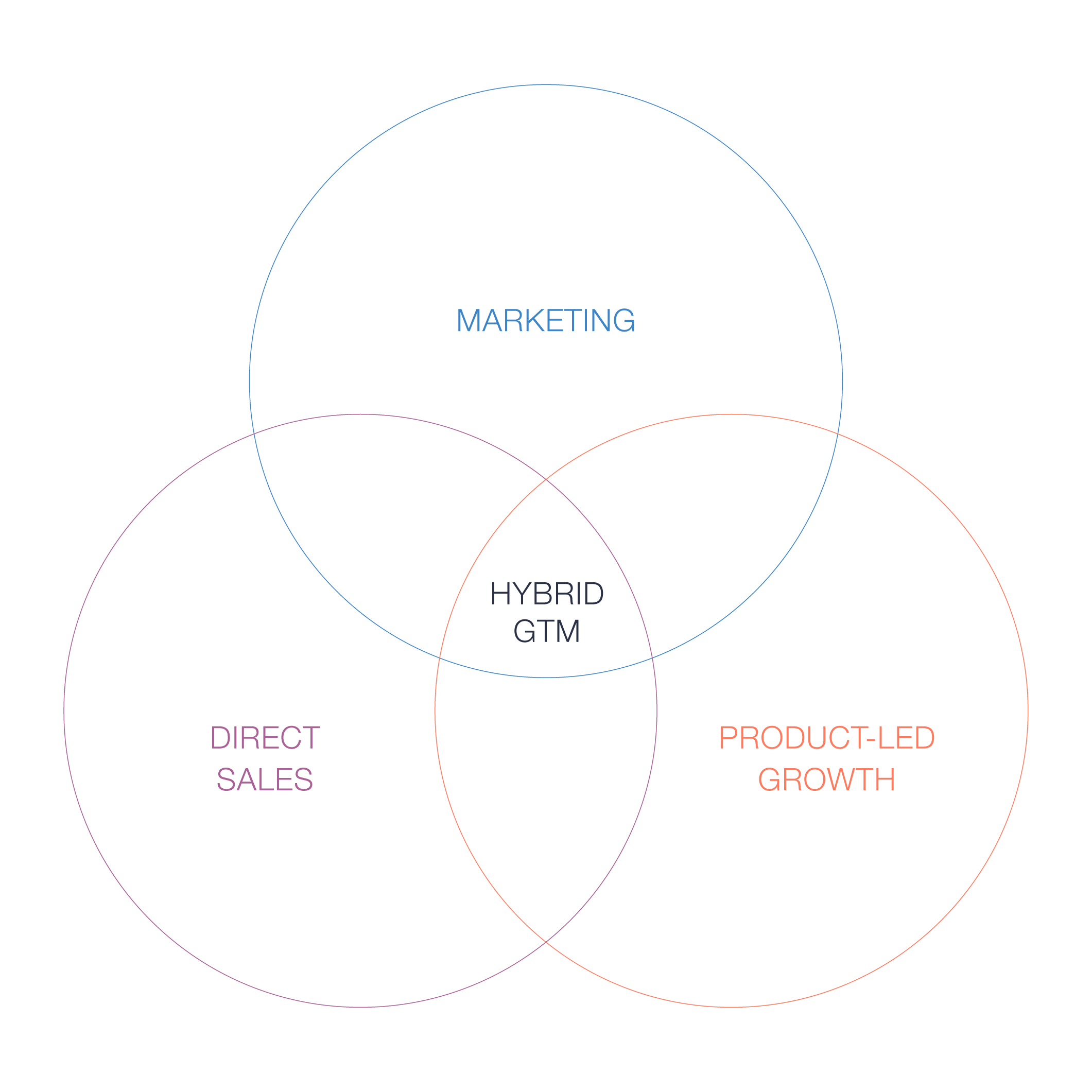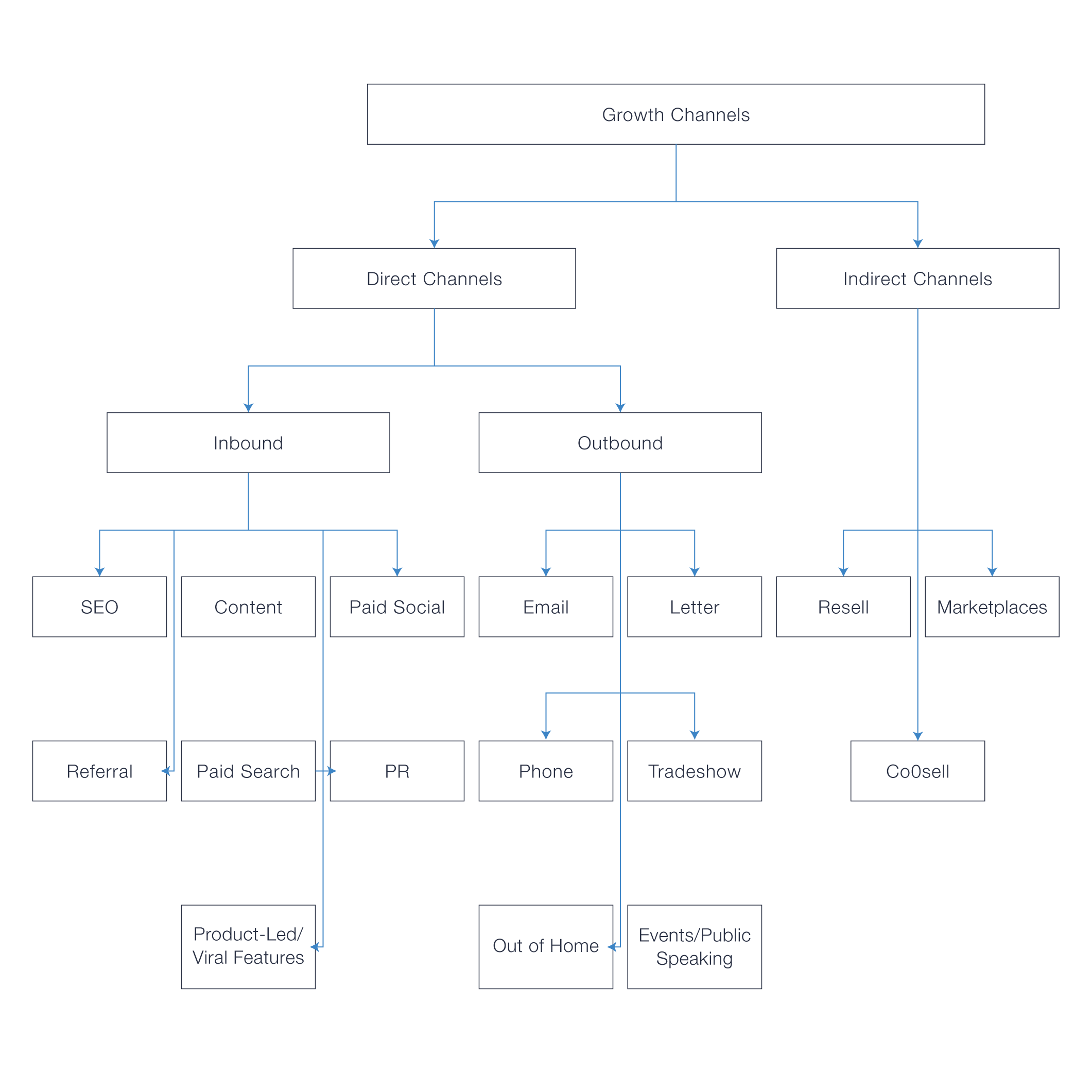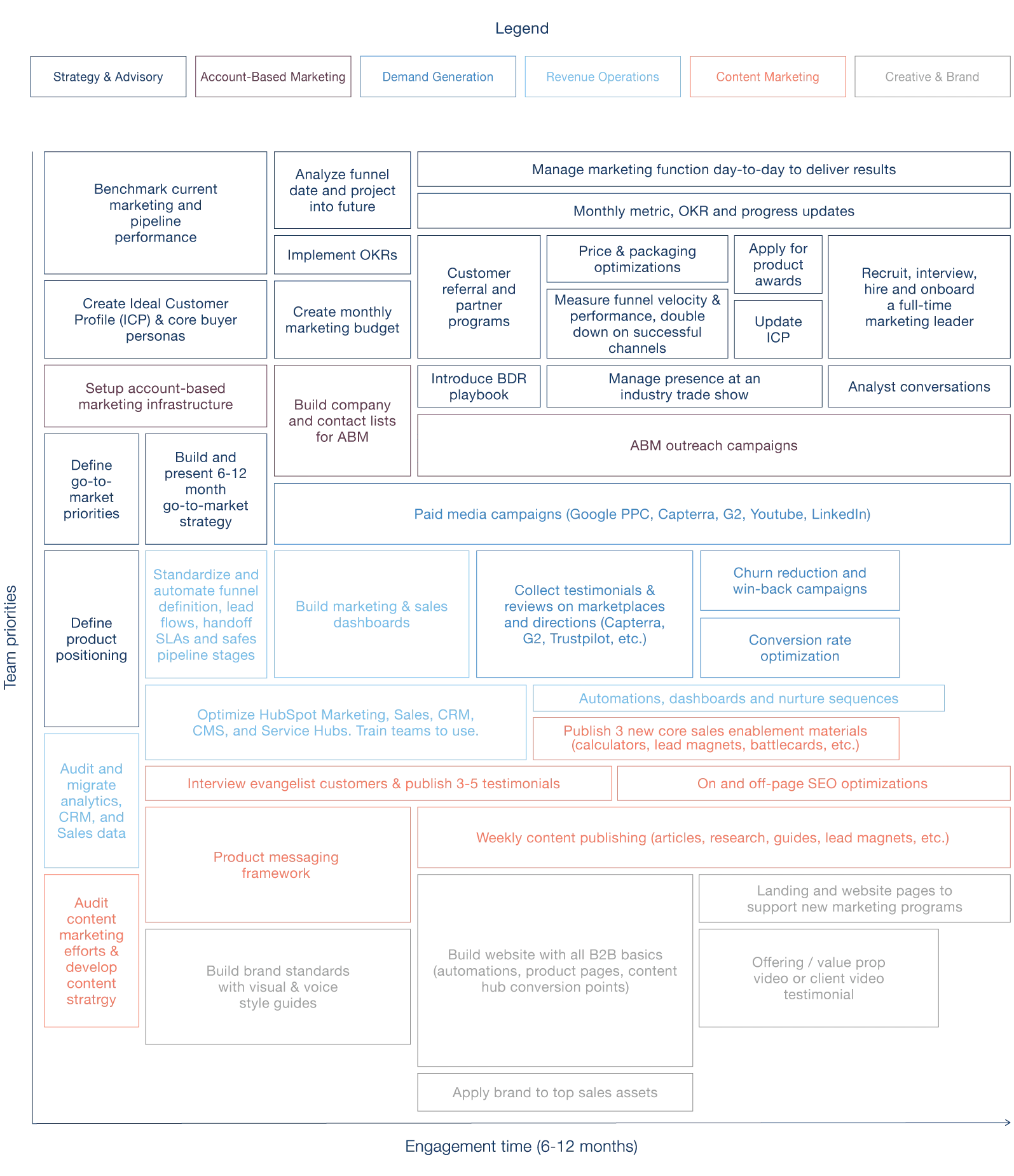Share this
Top 10 SaaS GTM Strategies for MRR Growth

Struggling with how to market your SaaS product? A strong SaaS GTM strategy is crucial.
In this article, you’ll discover ten key strategies to align your sales and marketing, effectively reach your target audience, and significantly boost your revenue.
Let’s dive into these actionable insights to drive your SaaS success.
Key Takeaways
-
A robust go-to-market (GTM) strategy aligns sales and marketing, providing a competitive edge and enhancing customer acquisition and retention.
-
Understanding the target market through comprehensive research and defining buyer personas is vital to tailoring marketing messages and addressing customer pain points.
-
Successful SaaS companies leverage clear value propositions, effective pricing strategies, and targeted marketing plans to drive growth, as evidenced by notable examples like Slack and HubSpot.
Importance of a SaaS GTM Strategy

A well-defined go-to-market strategy is the backbone of any successful SaaS company. It aligns sales and marketing goals, optimizing resources and efforts to ensure both teams work towards shared objectives rather than pulling in opposite directions. This alignment is crucial for maintaining a cohesive approach that maximizes efficiency and effectiveness.
In the highly competitive SaaS landscape, having a comprehensive GTM strategy provides a significant competitive advantage. It helps establish long-term customer relationships by addressing their needs and ensuring that the product adds tangible value. Without a clear strategy, SaaS companies risk targeting the wrong market or using ineffective tactics that hinder growth.
Moreover, a well-crafted GTM strategy offers insights into expanding market reach and driving customer acquisition, both of which are essential for revenue growth. Outlining how the product meets user needs and offers unique benefits compared to competitors helps increase conversion rates and customer loyalty.
Ultimately, a GTM strategy aims to increase revenue by launching new products, attracting customers, and outperforming competitors. This foundational approach ensures that the right audience is targeted effectively, optimizing the sales funnel and enhancing overall business performance.
Understanding Your Target Market
Thorough market research forms the bedrock of any successful go-to-market strategy. Through fully understanding the target market, SaaS companies can craft their marketing strategy s to meet the specific pain points of great-fit potential SaaS customers. This process includes identifying the target audience. It also involves understanding their preferences and analyzing their challenges.
Comprehensive market research not only guides product development but also enhances marketing and sales performance by ensuring a good product-market fit. Methods such as using industry reports, customer surveys, and competitor analyses can provide valuable insights into customer segments and their unique needs, helping to avoid launching products without demand.
Defining Buyer Personas
Defining buyer personas is a critical step in understanding the target market. Buyer personas consist of detailed subgroups of customers. They include insights into their motivations, challenges, and decision-making processes. These personas are characterized by key attributes such as demographics, behaviors, and needs, which help refine marketing and sales strategies to resonate better with potential clients.
The development of ideal customer profiles and buyer personas should be an ongoing process, adapting as the market and product evolve. Focusing on specific needs and characteristics allows companies to craft targeted messages that address their audience’s pain points, improving customer acquisition efforts.
Analyzing Customer Needs and Pain Points
Identifying and analyzing customer needs and pain points is essential for achieving alignment with product-market fit. Valuable data types for B2B SaaS companies include customer behavior, usage patterns, and product performance. Techniques such as analyzing usage patterns and gathering customer behavior data can provide deep insights into customer demands.
For instance, Notion understood customer needs by creating a highly customizable, frictionless tool, which significantly contributed to its market positioning and customer satisfaction. Jasper’s marketing strategy effectively addresses the audience’s challenges. It does this by highlighting specific issues through real-world applications and success stories.
Addressing customer pain points and demands enables companies to develop solutions that attract paying customers and foster long-term relationships. This approach ensures that the product aligns well with market needs, leading to higher customer satisfaction scores and improved customer success.
Crafting a Unique Value Proposition

A unique value proposition (UVP) is the cornerstone of a successful go-to-market strategy. It articulates the unique benefits and advantages of the SaaS solution, differentiating the product from competitors. A compelling UVP should clearly address how your product meets specific user needs and provides unique benefits compared to alternatives.
To create a clear value proposition, it’s essential to identify unique features. These features should highlight benefits that directly meet customer needs. This concise statement should show how the solution solves user problems and meets their needs, providing tangible value that attracts customers.
An effective messaging strategy is essential for articulating the value proposition and addressing customer challenges clearly.
Value Proposition Canvas
The Value Proposition Canvas is a powerful tool that helps visualize the alignment between product benefits and customer needs. Communicating how the product solves customer problems better than alternatives effectively articulates its unique value. This tool ensures that the value proposition resonates with the target audience by highlighting key features, solving pain points, and measurable outcomes.
User testing and gathering feedback from beta users are essential processes to meet the needs of the target audience. A UVP should focus on the benefits to the customer, ensuring the product resonates with their needs and provides a competitive advantage.
Messaging Strategy
A clear value proposition serves as the foundation of the messaging strategy. Messaging should convey product value and address customer pain points, highlighting how the product improves workflows and solves problems. Effective messaging resonates with the audience and persuades consideration, making it a crucial component of marketing efforts.
Consistency in messaging across all marketing channels is vital to reinforce the product’s unique benefits. This approach ensures that the market strategy remains focused and effective, driving customer acquisition and enhancing market positioning.
Developing a Pricing Strategy
Developing a strategic pricing model is crucial for maximizing profitability while matching customer value perceptions. Value-based pricing, which depends on the perceived value to the customer, is particularly essential for SaaS businesses. Determining the right sales approach and aligning pricing models appropriately are key components of a successful GTM strategy.
A successful pricing strategy requires balancing the value provided to customers with the revenue generated. This includes considering various pricing strategies, such as subscription-based models and the freemium model, to ensure that the pricing aligns with business goals and satisfies customer needs.
Subscription-Based Models
The subscription-based revenue model establishes predictable revenue, fosters long-term customer relationships, and improves financial planning. This model increases customer lifetime value by incentivizing ongoing subscriptions. There are several subscription pricing strategies, including flat rate pricing, usage-based pricing, tiered pricing, and per-user pricing.
Choosing the right pricing strategy is essential to align with business goals and satisfy customer needs. For instance, tiered pricing offers multiple packages at different price points, catering to diverse customer needs.
Freemium Model
The freemium model combines free basic features with premium paid options, serving as an effective tool for customer acquisition. Companies like Dropbox and Zoom have successfully leveraged the freemium model to grow their user base. This model allows users to access basic features for free, which can lead to increased lifetime value as users opt for premium features over time.
For example, Privy uses the freemium model to gain new subscribers without cost objections. This approach supports growth through word of mouth and increases customer acquisition efforts.
Selecting Distribution Channels

Selecting the right distribution channels is crucial for effectively reaching the target market. An effective distribution strategy should align with customer preferences and product complexity, considering factors such as direct sales and strategic partnerships. Mastering one marketing channel at a time before adding others can enhance marketing efficiency.
Companies can use a combination of self-service sign-up options, inside sales teams, and partnerships as distribution channels for SaaS products. Factors influencing the choice of distribution channels include customer segments, market penetration, and the specific needs of the target market.
Direct Sales
Direct sales allow for immediate customer interaction, fostering more personal connections. This approach is particularly beneficial for more advanced products, where a dedicated sales team can focus on communicating complex value propositions. However, direct channels require more resources compared to indirect channels.
To succeed in direct sales, it is crucial to weigh the benefits of personal interaction and dedicated focus against the resource intensity required. This approach can significantly enhance customer acquisition and long-term customer relationships.
Strategic Partnerships
Strategic partnerships amplify marketing messages and extend market reach. Through co-marketing, co-selling, and co-development, SaaS companies can explore new opportunities and drive revenue growth. For example, Dropbox strategically partnered with Microsoft and Adobe, enhancing its value proposition and increasing market reach.
Strategic acquisitions and partnerships can significantly expand a SaaS company’s product portfolio and market reach, driving revenue growth. This approach supports long-term customer relationships and enhances overall business performance.
Building a Marketing Plan

Building a comprehensive marketing plan is vital for the success of a SaaS go-to-market strategy. This plan should include various marketing channels and specific campaigns tailored to the target audience. Utilizing a mix of digital marketing channels, such as content marketing, email marketing, and social media, allows companies to reach a broader audience and maximize their impact.
A marketing campaign should be centered around a specific topic, unique selling proposition (USP), or content asset. For instance, HubSpot’s go-to-market approach revolved around inbound marketing, emphasizing the creation of educational content to attract and engage potential customers. This strategy not only enhances customer acquisition efforts but also establishes the brand as a thought leader in the industry.
Content Marketing

Content marketing is a powerful strategy for SaaS companies to attract and retain users by addressing their specific needs. Creating and sharing valuable content builds trust and credibility, establishing the brand as a thought leader in the industry. This approach is particularly effective for nurturing leads through top-of-funnel activities, ensuring that potential buyers are educated about the company’s offerings.
Effective content marketing involves producing a variety of content types, such as blog posts, whitepapers, case studies, and webinars, that resonate with the target audience. By addressing common challenges and providing solutions, companies can enhance customer acquisition and foster long-term customer relationships.
Social Media Strategy
A robust social media strategy is essential for SaaS companies to connect with their target audience effectively. Social media platforms provide a unique opportunity to engage users through targeted content that addresses their interests and pain points. Creating content that targets user interests and addresses specific challenges fosters stronger engagement and loyalty.
Engaging with users on social media not only helps in building brand awareness but also drives traffic to the company’s website and other digital assets. This approach supports the overall marketing plan and enhances customer acquisition efforts.
Structuring Your Sales Team
A well-structured sales team is crucial for marketing more sophisticated SaaS products. A diverse team with expertise in marketing, sales, product development, customer success, and analytics is essential for executing a SaaS go-to-market strategy. Collaboration with the sales team ensures a smooth handoff and maximizes lead conversion efficiency.
For a freemium pricing model, employing sales reps for live chat with inbound leads can be effective. When targeting enterprise customers with outbound methods, a team of SDRs using cold email, cold calling, and direct social media is required.
Establishing a culture of continuous improvement within the organization supports the sales strategy effectively.
Inbound vs. Outbound Sales Efforts
Inbound sales involve responding to customer inquiries, while outbound sales focus on proactively reaching out to potential buyers. Business Development Representatives (BDRs) generate new business opportunities through outbound sales techniques like cold calling and networking. Account Development Representatives (ADRs) engage with existing accounts, helping to identify opportunities for upselling or cross-selling within those relationships.
SaaS companies may overlook outbound marketing. This is often because inbound marketing has gained significant popularity. However, focusing on outbound marketing can be beneficial when there’s little need for content marketing or low-hanging SEO opportunities.
Sales Reps and SDRs
Sales Development Representatives (SDRs) play a critical role in the sales process by focusing on lead qualification. SDRs primarily follow up with incoming leads, qualifying them based on their interest and readiness to purchase. By qualifying leads and setting appointments, SDRs are crucial for effective sales pipeline management.
This approach ensures that the sales team can concentrate on closing deals with well-qualified leads, improving the efficiency of the sales process and increasing conversion rates.
Enhancing Customer Success
Customer success teams are essential in driving revenue while ensuring effective onboarding for customers. Aligning customer success initiatives with go-to-market strategies can significantly enhance retention and expansion opportunities. A customer’s first experience with a SaaS product is critical to their ongoing satisfaction and usage.
Overlooking user experience can result in customer frustration and loss of potential users, emphasizing the necessity for continuous support. An effective onboarding process and customer feedback loops are vital for promoting overall customer satisfaction and reducing churn.
Onboarding Process
An effective onboarding process can greatly influence a customer’s long-term satisfaction and product usage. Quality educational content, such as tutorials and guides, enhances user adoption and reduces churn by helping customers utilize the software effectively. Neglecting proper user onboarding can lead to high user drop-off rates, affecting overall customer success.
A clear onboarding process should include step-by-step tutorials, comprehensive documentation, and responsive customer support. This approach ensures that customers can quickly and efficiently integrate the software into their workflows, leading to higher customer satisfaction scores and long-term customer relationships.
Customer Feedback Loops
Establishing feedback loops is crucial for understanding customer needs and improving the product. Customer feedback should be collected throughout the design phase, during beta testing, and after product launch. Failing to listen to customer feedback can result in misalignment with market needs and expectations, ultimately affecting customer satisfaction.
Customer feedback mechanisms, such as surveys, in-app feedback forms, and support tickets, help refine features and better address user needs. Acting on these insights can significantly enhance product offerings and ensure that the SaaS solution meets customer demands.
Measuring and Optimizing Performance
Measuring and optimizing performance is essential for the success of a SaaS go-to-market strategy. Key performance indicators (KPIs) provide a starting point for gauging the effectiveness of the actions taken. Establishing baseline metrics for KPIs allows companies to measure the impact of optimizations and make data-driven decisions.
Customer feedback and data analytics can identify opportunities for improvement and facilitate continuous strategy optimization. Monitoring market trends, competitive dynamics, and customer feedback is critical for refining the go-to-market approach and ensuring long-term success.
Key Performance Indicators
KPIs should be specific, measurable, and directly tied to the GTM strategy’s objectives. Key performance indicators (KPIs) for a SaaS go-to-market (GTM) strategy are essential. These include customer acquisition cost (CAC), customer lifetime value (LTV), churn rate, conversion rates, lead-to-opportunity ratio, average revenue per user (ARPU), and market share.
Data-driven decision-making allows SaaS companies to identify improvement areas, prioritize feature development, and personalize marketing. Utilizing social media analytics can help measure engagement and refine content strategy to better resonate with the audience.
Iterative Optimization
To succeed in the B2B SaaS market, it’s essential to:
-
Adapt and innovate.
-
Optimize strategies continuously.
-
Utilize feedback and data analytics to identify opportunities for improvement.
-
Monitor market trends and customer feedback to refine the go-to-market strategy.
Establishing a culture of continuous improvement within the organization supports the ongoing refinement of strategies. Small incremental modifications to the GTM strategy can be effectively implemented to ensure continuous growth and optimization.
Real-World Examples of Successful SaaS GTM Strategies

Real-world examples provide valuable insights into successful SaaS GTM strategies. Companies like Slack and HubSpot have demonstrated the effectiveness of product-led growth and inbound marketing, respectively. These examples illustrate how a well-defined GTM strategy can drive significant user growth and revenue.
Leading SaaS companies focus on their unique offerings and market needs to inspire their GTM strategies. By embracing educational content and thought leadership, they attract new customers and establish themselves as industry leaders.
Slack's Product-Led Growth
Slack’s primary go-to-market strategy was product-led, focusing on providing a superior user experience and solving customer pain points. This approach led to Slack gaining 8,000 users within the first 24 hours after its launch. Today, Slack services over 32 million daily active users, showcasing its product-led growth success.
Emphasizing a seamless user experience and addressing specific customer needs has allowed Slack to achieve significant revenue growth and establish itself as a leading B2B SaaS product. This example highlights the importance of a user-centric approach in driving product adoption and market penetration.
HubSpot's Inbound Marketing
HubSpot’s go-to-market strategy focuses on inbound marketing, leveraging educational content to attract and engage potential customers. Embracing inbound marketing allows HubSpot to effectively attract potential customers through valuable and relevant content. This approach has enabled HubSpot to demonstrate value before any sales outreach occurs, enhancing customer acquisition efforts.
Educational content serves as a critical tool for HubSpot, helping to engage customers and establish the brand as a thought leader in the industry. This strategy not only drives traffic and leads but also builds trust and credibility with the target audience.
Common Mistakes to Avoid
Avoiding common mistakes is crucial for the success of a SaaS GTM strategy. Mistakes such as targeting too many markets at once or using too many marketing strategies can dilute focus and hamper effectiveness. SaaS entrepreneurs should stick to one core marketing channel initially to build a strong foundation.
Investing minimal time in developing pricing strategies can lead to significant revenue losses. By avoiding these common pitfalls, companies can ensure a more focused and effective GTM strategy that aligns with their business goals.
Overcomplicating the Strategy
Overcomplicating the GTM strategy can lead to inefficient customer acquisition efforts. Keeping the strategy simple helps ensure clarity and focus, allowing for better alignment of sales and marketing efforts. Regularly reviewing the GTM strategy can help eliminate unnecessary complexity and maintain a streamlined approach.
A focused approach not only enhances marketing and sales performance but also ensures that the company can effectively address customer needs and pain points. This simplicity allows for a more agile and responsive strategy that can adapt to market changes.
Ignoring Customer Feedback
Ignoring customer feedback can lead to product offerings that do not meet market demands, ultimately affecting sales and customer retention. Customer insights are crucial for creating effective marketing strategies that resonate with the target audience. Implementing customer feedback loops helps in collecting valuable insights that inform product development and adjustments.
Creating a value matrix allows companies to focus their messaging and better align their offerings with customer needs. This approach ensures that the product remains relevant and competitive in the market, enhancing customer satisfaction and success.
Summary
In summary, a well-defined go-to-market strategy is essential for the success of B2B SaaS products. From understanding the target market and crafting a compelling value proposition to developing a strategic pricing model and building a comprehensive marketing plan, each component plays a crucial role in driving customer acquisition and revenue growth.
By avoiding common pitfalls and continuously optimizing the strategy, companies can ensure long-term success and establish themselves as industry leaders.
Frequently Asked Questions
Why is a go-to-market strategy important for SaaS companies?
A go-to-market strategy is crucial for SaaS companies as it aligns sales and marketing efforts, optimizes resource allocation, and ensures that the product effectively meets customer needs, thereby enhancing competitive advantage.
What is the role of buyer personas in a GTM strategy?
Buyer personas play a crucial role in a go-to-market strategy by tailoring marketing and sales efforts to the specific needs and challenges of target customers, ultimately improving customer acquisition.
How does the freemium model benefit SaaS companies?
The freemium model is advantageous for SaaS companies as it enhances customer acquisition by providing free access to basic features, ultimately leading to increased lifetime value when users transition to premium offerings. This approach encourages user engagement and can significantly boost revenue over time.
What are key performance indicators (KPIs) in a SaaS GTM strategy?
Key performance indicators (KPIs) in a SaaS go-to-market strategy include customer acquisition cost (CAC), customer lifetime value (LTV), churn rate, conversion rates, lead-to-opportunity ratio, average revenue per user (ARPU), and market share. Monitoring these metrics is crucial for evaluating and optimizing your strategy's success.
Why is customer feedback crucial in a GTM strategy?
Customer feedback is crucial in a GTM strategy because it offers insights that guide product development, ensuring that the product aligns with market needs and ultimately boosts customer satisfaction and retention.

